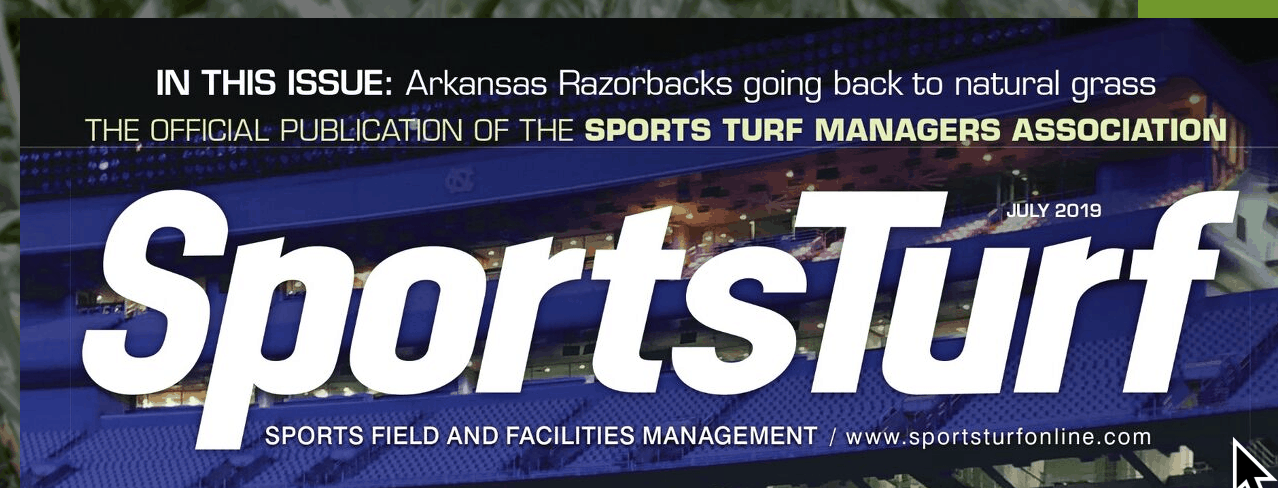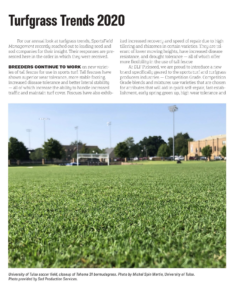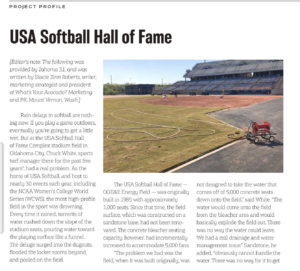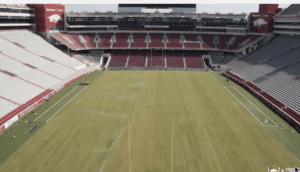Tahoma 31’s selection as the new playing surface at the University of Arkansas Razorback Stadium marks the first SEC college to grass with the new bermudagrass. With the renovation underway for the 2019 fall opener, the sports turf manager, sod farmer who produced the grass, installer and university researchers weigh in on Tahoma 31. Here’s an excerpt from the article:
With Coach Chad Morris, a self-proclaimed natural grass guy, the verdict to replace the plastic surface with natural grass came as no surprise to Razorback fans. The selection of Tahoma 31 Bermudagrass came, in no small measure, on the enthusiastic recommendations of Drs. Karcher and Richardson, which were based on the results of the National Turfgrass Evaluation Program (NTEP) studies in cold and drought tolerance, as well as the wear-tolerance research conducted by Dr. John Sorochan at the University of Tennessee that showed the variety’s exceptional wear tolerance. In fact, Berger included only one natural grass variety in his presentation to Yurachek and Morris: Tahoma 31.
Dr. Doug Karcher, a Professor of Turfgrass Science at the University of Arkansas for nearly 20 years, recalls, “I started hearing rumors in late winter or early spring 2018 that our new coach, Chad Morris, was interested in going to natural grass. The artificial turf was coming up on 10 years , was out of warranty, and needed to be replaced anyway. When I heard this, I started communicating with Pat Berger about what some natural grass options would be for Razorback stadium.”
The University of Arkansas served as one of the test sites in the most recent five-year NTEP study of Bermudagrass varieties. Karcher compared all the latest cultivars, side by side, right there on the same campus and in the same climate as the stadium.
“I shared our information on how Tahoma 31 performed in our trials. I told Pat it would be a good variety,” Karcher says. “It’s safe to say that Pat was a little hesitant about Tahoma 31 because it was so new when we started discussing it, and he couldn’t talk to anybody who had been using it at the time (on a sports field). But Dr. Richardson and I thought the data were so compelling, that it looked so good and was so well adapted to northwest Arkansas, that it should be a slam dunk decision.”





